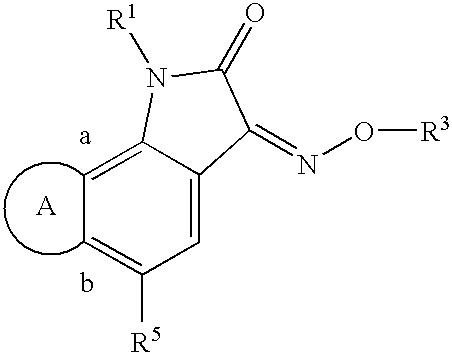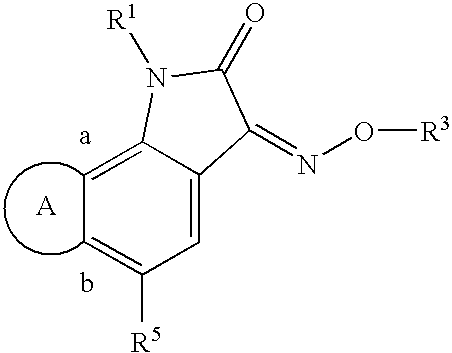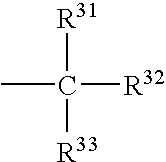Indole-2,3-dione-3-oxime derivatives
a technology of indole and 3dione, applied in the field of indole2, 3dione3oxime derivatives, can solve problems such as neuron degeneration and death
- Summary
- Abstract
- Description
- Claims
- Application Information
AI Technical Summary
Benefits of technology
Problems solved by technology
Method used
Image
Examples
example 1
Preparatory Example
##STR13##
A solution of 4-acetamido-2-methyl-2H-1,3-dihydro-isoindole (10 g) and bromine (3.0 g) in trifluoroacetic acid (150 ml) was stirred at 50.degree. C. for 40 hours. The solution was evaporated in vacuo. The residue was dissolved in water (300 ml), and pH was adjusted to neutral with sat. Na.sub.2 CO.sub.3. This treatment afforded a crystalline precipitate of the product, which was collected by filtration. Yield 9 g, m.p. 145.degree.-148.degree..
example 2
Preparatory Example
##STR14##
A solution of potassium nitrate (1.78 g, 8.56 mmol) was added slowly to a solution of 5-bromoisoquinoline in 12 mL H.sub.2 SO.sub.4. After stirring for 3 hours the reaction mixture was poured onto ice and neutralised with conc. ammonium hydroxide. The yellow precipitate was extracted with ethyl acetate (3.times.), and the combined organic layers were washed with saturated NaCl, dried over MgSO.sub.4, filtered and concentrated. The residue was chromatographed on silica gel (40% ethyl acetate in hexane as eluent) to give 5-bromo-8-nitroisoquinoline in 96% yield.
example 3
Preparatory Example
##STR15##
A mixture of 5-bromo-8-nitroisoquinoline (0.99 g, 3.91 mmol) and dimethylsulfate (0.41 mL) in anhydrous DMF (20 mL) was heated at 80.degree. C. for 24 hours. After removing the DMF in vacuo, the isoquinoline methylammonium salt was obtained (used without further purification).
In a similar manner the following compound was prepared:
2-ethyl-5-bromo-8-nitroquinolinium ethylsulphate by reaction with diethyl sulphate.
PUM
| Property | Measurement | Unit |
|---|---|---|
| particle size | aaaaa | aaaaa |
| temperature | aaaaa | aaaaa |
| temperature | aaaaa | aaaaa |
Abstract
Description
Claims
Application Information
 Login to View More
Login to View More - R&D
- Intellectual Property
- Life Sciences
- Materials
- Tech Scout
- Unparalleled Data Quality
- Higher Quality Content
- 60% Fewer Hallucinations
Browse by: Latest US Patents, China's latest patents, Technical Efficacy Thesaurus, Application Domain, Technology Topic, Popular Technical Reports.
© 2025 PatSnap. All rights reserved.Legal|Privacy policy|Modern Slavery Act Transparency Statement|Sitemap|About US| Contact US: help@patsnap.com



